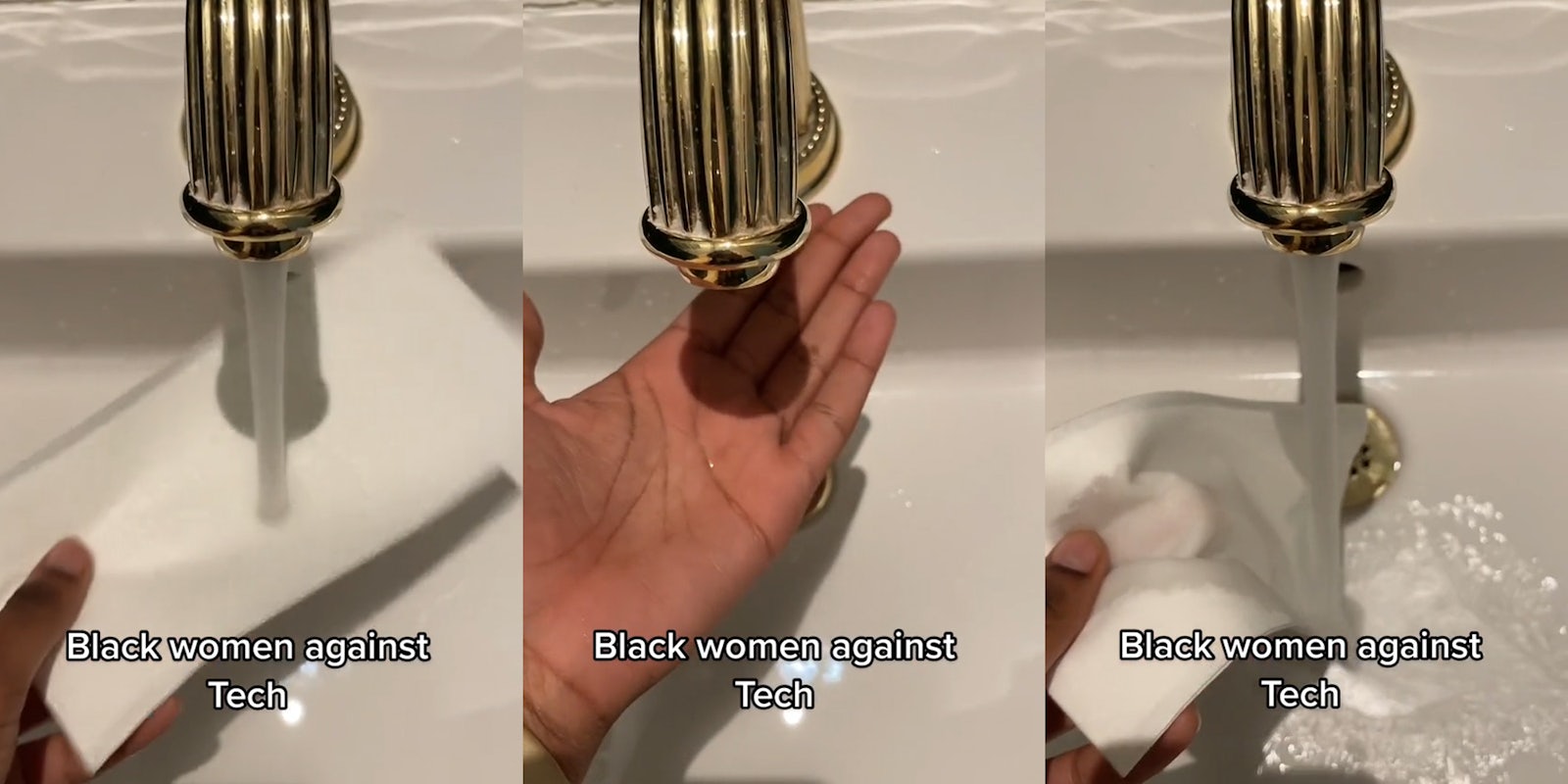In a recent viral TikTok, a woman demonstrates what she believes could be a racial disparity in the automatic sink faucet at her workplace.
Watch on TikTok
The video, posted by Six Shelsea Laplante (@makavelispriv), amassed 1.9 million views by Thursday. The TikTok shows Laplante attempting to use an automatic faucet to no avail. But when she places a white paper towel under the faucet, water begins to dispense.
“Black women against Tech” is displayed across the video. Laplante told the Daily Dot via message that she experiences this kind of issue “almost all the time.”
“I took the video because I was in the restroom at work trying to wash my hands and it just would not turn on; as a joke, I pulled a white paper and it worked!” she said.
Her video ignited a wave of comments relating to the experience.
“I thought I was losing my mind when this happened to me,” a user commented.
Musician and recent Grammy winner Muni Long wrote, “Omg. THIS IS WHY THE FAUCETS NEVER FREAKIN WORK FOR ME?!”
Some offered reasons behind this phenomenon.
“Ya these sensors are among the most infamous cases of technological discrimination,” a user says. “The implications of it are pretty insane actually.”
“I think it’s because darker skin doesn’t absorb light the same and the sensors have a hard time,” a commenter says. “Either way needs to be fixed!”
According to a Mic article, Richard Whitney, former vice president at tech company Particle explained that in automatic soap dispensers, an infrared LED bulb sends an “invisible light” for hands to reflect back to a sensor.
“The reason the soap doesn’t just foam out all day is because the hand acts to, more or less, bounce back the light and close the circuit,” he said.
People with darker skin may find dispensers that use infrared technology more difficult because the more melanin a person has, the more UV rays their skin absorbs.
Whitney also said that sometimes sensors can just be faulty and pick up hand movements at weird angles.
Laplante said a non-Black co-worker also experienced difficulties activating the faucet, but racial disparities in tech are real and can have detrimental consequences.
The New England Journal of Medicine reports that Black patients are almost three times as likely than white patients to not have occult hypoxemia, or low oxygen levels in the blood, detected by pulse oximetry, which measures blood oxygen levels.
Laplante says she now uses white paper to activate her work’s sink every day.



